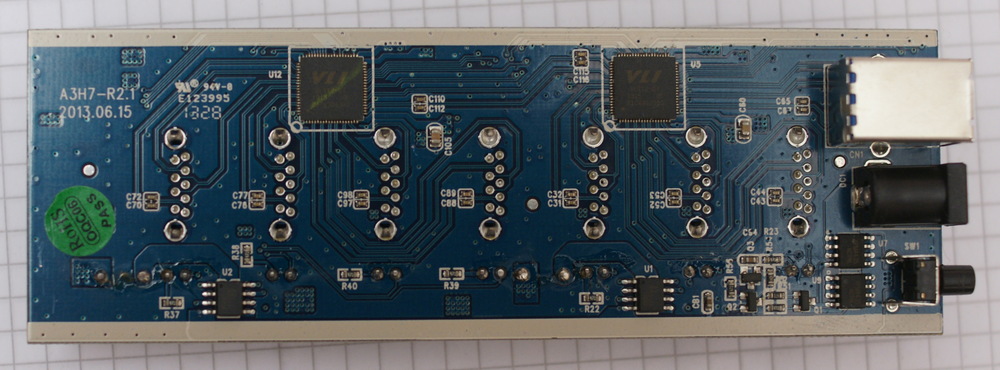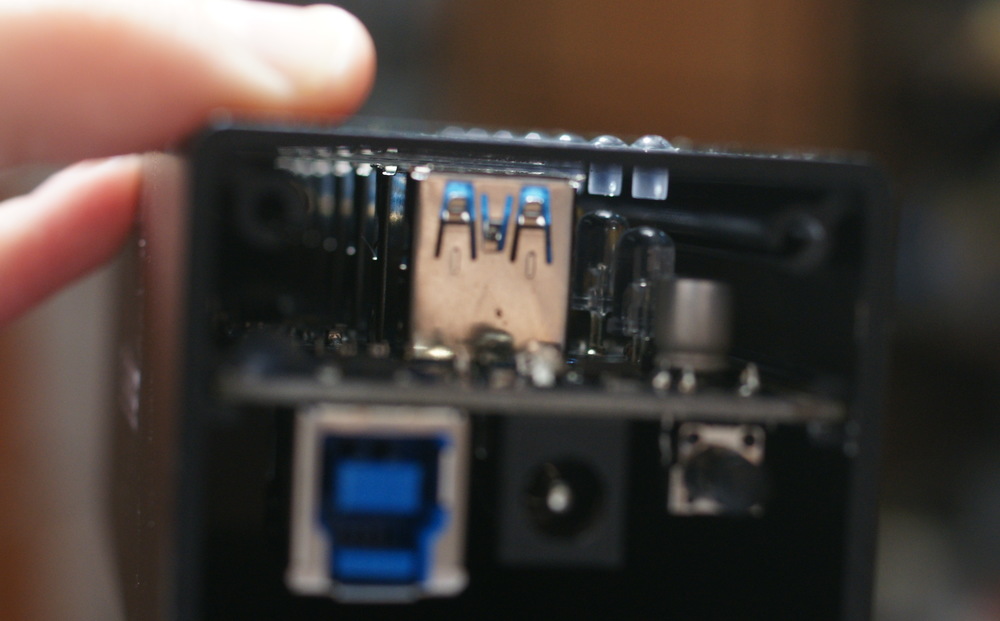Briefly about the perfect 7-port USB 3.0 hub ORICO
For a long time to me did not get the iron, so consistent with my ideas about the ideal, that I wanted to write about this for Habr. It's about the 7-port USB 3.0 hub ORICO. Earlier, I wrote that it turns out when the Chinese are making copies of the habit - today we will see what can happen when the Chinese make the original product. And how well everything turned out is surprising and a little scary (in the sense that the business model “we are developing in the west — we are doing in China” may come to an end). Looking ahead picture:

It would seem that a USB hub is such a simple thing, what can you do wrong there? However, almost all commercial hubs - the same shortcomings (in my opinion) are repeated:
')
The hero of the article is not so. It is anodized aluminum, heavy and durable. Looks great. Because of the square shape - with the same success, you can put both "connectors up" and "sideways". USB3.0 connector - type B (as in printers), very securely held:



The light from the LEDs - is output to the outside by small fibers:

In the work - no complaints, USB3.0 squeezes the maximum speed, limited by my devices (managed to dial devices at 200 MB / s).
There was only one small nuance - the blue LEDs are a bit bright and in my opinion - the pops of the 90s. Because I ruthlessly vypayal them, and soldered orange. Current limiting resistors did not change - the orange ones themselves are much less bright. The result is a complete ideal (in my personal presentation):


It cost all this happiness - at $ 44.15 on a well-known aliexpress.

It would seem that a USB hub is such a simple thing, what can you do wrong there? However, almost all commercial hubs - the same shortcomings (in my opinion) are repeated:
')
- It is lightweight - not securely on the table.
- It is plastic - and even with serious manufacturers it often looks mediocre.
- It connects to the computer most often with a mini-USB connector - the cable is very unreliable to hold on
- When you connect the power supply - give 5V to the computer, even if it is turned off (this can have many consequences)
The hero of the article is not so. It is anodized aluminum, heavy and durable. Looks great. Because of the square shape - with the same success, you can put both "connectors up" and "sideways". USB3.0 connector - type B (as in printers), very securely held:

Internals:
Power supply - from 12V, with two internal DCDC converters. Next to each USB-connector - on the capacitor. In my opinion, everything is quite neat and high quality. Hub IC - VIA Labs VL812-Q7, 4-port USB3.0 hub. Accordingly, the second port is connected to the last port of the first hub. There is also a modification of the 10-port hub - in a similar way. Judging by the date of the revision of the PCB (2013.06.15) - the iron is rather fresh.

The light from the LEDs - is output to the outside by small fibers:

In the work - no complaints, USB3.0 squeezes the maximum speed, limited by my devices (managed to dial devices at 200 MB / s).
There was only one small nuance - the blue LEDs are a bit bright and in my opinion - the pops of the 90s. Because I ruthlessly vypayal them, and soldered orange. Current limiting resistors did not change - the orange ones themselves are much less bright. The result is a complete ideal (in my personal presentation):


It cost all this happiness - at $ 44.15 on a well-known aliexpress.
Source: https://habr.com/ru/post/212947/
All Articles